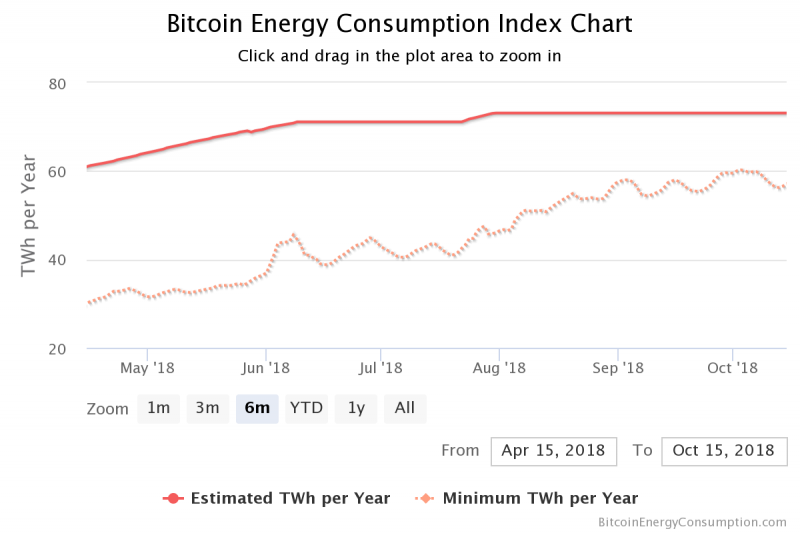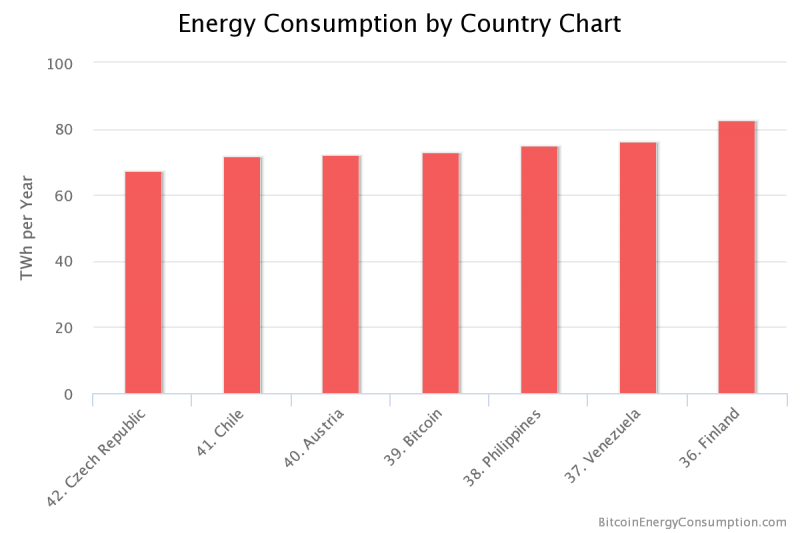A Problem With Blockchain Projects: How To Consume Less Energy
Most of the focus when it comes to blockchain based cryptocurrencies is on their value. People are constantly debating whether cryptocurrencies like Bitcoin are going to go bust or whether they will grow exponentially in value. A major conversation that often gets sidelined is the massive energy that is used to power blockchain projects.
Why Blockchain Projects Use Massive Amounts Of Energy
Let’s use the example of Bitcoin, the poster child of blockchain technologies, to discuss how blockchain projects consume massive amounts of energy. Bitcoin, like all blockchain projects, works on the basis of a distributed ledger which records all Bitcoin transactions.
Every 10 minutes, new sets of transactions or “blocks” get added to the Bitcoin blockchain by Bitcoin “miners”. Every miner individually prepares the next block to be added to the blockchain. However, only one of the blocks gets selected to be added to the blockchain. This selection is made on the basis of something known as Proof-of-Work (PoW).
In Proof-of-Work, the block that gets added to the blockchain is the first valid block that is created by any miner. The algorithm uses a complex mathematical puzzle to make sure that a miner takes at least 10 minutes to create a block. As soon as a miner creates a valid block, other miners stop working on their own blocks. The successful miner is rewarded with a few bitcoins and a transaction fee for all the transactions that were processed in the block.
In order to create a valid block, the miners have to undergo a process that is mostly governed by trial and error; and only needs brute computational power - which gets harder over time. This means that several miners across the world are running power-hungry machines in the hope of being the lucky ones who create a valid block. In fact, Bitcoin miners attempt 450 thousand trillion transactions every second trying to create these valid blocks.
This means that every block of Bitcoin transactions consumes vast amounts of energy. The chart below shows the estimated energy consumption of bitcoin in the last 12 months. Bitcoin's estimated annual electricity consumption is a whopping 73.12 TWh.
 To give some perspective, 28.77 U.S. households could be powered for 1 day by the electricity consumed by just one Bitcoin transaction. In fact, the International Energy Agency recently published a report that talks about how Bitcoin energy consumption now exceeds that of several small countries. The chart below shows how bitcoin energy consumption compares to the energy consumption of different countries.
To give some perspective, 28.77 U.S. households could be powered for 1 day by the electricity consumed by just one Bitcoin transaction. In fact, the International Energy Agency recently published a report that talks about how Bitcoin energy consumption now exceeds that of several small countries. The chart below shows how bitcoin energy consumption compares to the energy consumption of different countries.

And it’s not just Bitcoin, but some other “old” cryptocurrencies also operate on the Proof-of-Work algorithm, using staggering amounts of energy to power their transactions.
Potential Repercussions Of Blockchain’s Massive Energy Consumption
Long-term sustainability
The massive use of energy in every blockchain transaction threatens the long-term sustainability of blockchain technology, especially cryptocurrencies like Bitcoin. As Bitcoin becomes more widely accepted, its value is likely to increase.
The higher Bitcoin’s value, the more miners will be incentivized and the more power will be consumed by every Bitcoin transaction. If the power consumption in blockchain transactions keeps growing at this pace, hyped up “climate change” concerns may prevent widespread adoption of blockchain technology.
Decentralization threatened
The strength of blockchain lies in the fact that it depends on a decentralized network to validate transactions, thus eliminating the need for centralized authorities. However, the energy used in blockchain transactions encourages centralization due to economies of scale. For example, a large mining farm can be built near a power station to reduce energy transmission costs.
Economies of scale encourage people to build mining farms instead of running the mining node themselves. This goes against the principle of decentralization which is what makes blockchain technology unique.
At the same time, the massive amounts of energy used in blockchain transactions has had certain positive repercussions too.
Better and cheaper energy sources
Many Bitcoin mining facilities are completely off the grid and use renewable energy resources (such as solar) along with energy resources that are not considered viable for other purposes.
Examples include an Upstream Data HashGen mining facility which uses natural gas, and a mining facility in upstate New York which has its own hydroelectric power source.
More efficient technology
The major reason why blockchain projects consume so much energy is the Proof-of-Work algorithm which pits miners against each other, competing to create a valid block in the fastest time. Although Proof-of-Work is the most proven and widely used method to reach a consensus in the blockchain, it is not the only one.
A number of alternative technologies are emerging and being used by some newer cryptocurrencies and blockchain startups. The most prominent of these is the Proof-of-Stake (PoS) algorithm.
In PoW, the probability of mining a block depends on how much computation is done by the miner. With PoS, the probability of mining a block depends on how much stake a miner has in the block. This means that the more the number of coins the miner has staked or locked up to verify a particular block of transactions, the more likely he is to successfully mine that block.
This means that with PoS, mining is no longer a function of brute computational power and instead depends on the stake a person has. This takes the excessive use of energy out of the equation from blockchain projects. Apart from energy conservation, PoS has certain other advantages as well: it allows for true decentralisation, as well as the incorporation of certain advanced features in the blockchain.
Although PoS is less proven as compared to PoW, the massive energy consumption in Proof-of-Work based projects is forcing many blockchain projects to move to PoS. Ethereum, a popular cryptocurrency, is planning to move from PoW to PoS by the end of 2018. This will mark a major shift to PoS, and more upcoming projects will use the PoS algorithm.
There are newer technologies that are being used to arrive at a consensus and are even more decentralized than PoS. One such example is the Decentralized Proof-of-Stake (DPoS) protocol. DPoS uses real-time voting combined with a social system of reputation to achieve consensus, making it one of the most decentralized and inclusive consensus protocols.
Another energy efficient consensus protocol is the Federated Byzantine Agreement (FBA) on which cryptocurrencies like Ripple are based. It’s one of the best protocols for distributed consensus because of its high throughput, low transaction cost, and scalability. Other protocols like Proof-of-Weight and Proof-of-Authority are also much more energy efficient than PoW.
Reduction In Energy Consumption As Blockchain Technology Changes
Like all major technology, blockchain too has witnessed significant changes since it came into existence almost 10 years ago. As Proof-of-Stake and similar alternatives get explored more and more, it is very likely that blockchain projects will move away from the energy-intensive Proof-of-Work algorithm. While concerns about the massive amounts of energy used in blockchain transactions may or may not be as valid as one may think, it is certainly probable that technology advances will soon largely make excessive energy consumption a thing of the past, both with new energy sources, and in technologies that use all manner of energy sources more efficiently.

